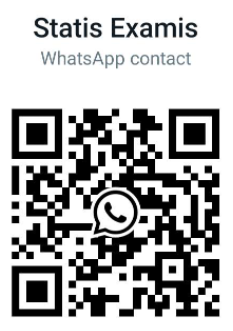Navigation » List of Schools » Prince George Community College » Psychology » Psychology 2070 – Human Growth and Development » Fall 2022 » Quiz 3
Question #1
A Parental sensitivity
B Extraversion
C Uninhibited disposition
D Genetic predisposition
Question #2
A joint attention.
B face-to-face play.
C imitation.
D parallel play.
Question #3
A Social referencing
B Secure attachment
C Goodness of fit
D Reciprocal socialization
Question #4
A temporal
B occipital
C parietal
D frontal
Question #5
A equilibrium
B disequilibrium
C symmetry
D disturbance
Question #6
A the grasping reflex
B the sucking reflex
C the rooting reflex
D the Moro reflex
Question #7
A the yellow circle
B the drawing of a face
C the bright blue square
D the white oval
Question #8
A experiencing pain.
B very hungry.
C experiencing embarrassment.
D very angry.
Question #9
According to Bowlby’s conceptualization of attachment, which of the following occurs during phase 3?
A Attachment becomes focused on one figure, usually the primary caregiver, as the baby gradually learns to distinguish familiar from unfamiliar people.
B Children become aware of others’ feelings, goals, and plans and begin to take these into account in forming their own actions.
C Strangers, siblings, and parents are equally likely to elicit smiling or crying from the infant.
D With increased locomotor skills, babies actively seek contact with regular caregivers, such as the mother or father.
Question #10
A sensation.
B reception.
C perception.
D transition.
Question #11
A habituation and dishabituation method.
B orienting response and tracking method.
C visual preference method.
D high-amplitude sucking method.
Question #12
A It includes the tectum, the tegmentum, and the cerebral peduncles.
B It consists of the medulla, cerebellum, and pons.
C It is the portion of the brain that is farthest from the spinal cord.
D It insulates axons and helps electrical signals travel faster down the axon.
Question #13
A Major
B Learned
C Fine
D Gross
Question #14
A securely attached.
B insecure avoidant.
C insecure resistant.
D insecure antisocial.
Question #15
A Cognitive development
B Reflexive behavior
C Posture
D Alignment
Question #16
A Moro
B rooting
C grasping
D fencing
Question #17
A the formation of a layer of fat cells that encases many axons
B the ferrying of information across neurotransmitters by a synapse
C the release of neurotransmitters into the cell body of a neuron by terminal buttons
D the chemical interactions in synapses that connect axons and dendrites
Question #18
A excessive parental involvement in sleep-related interactions with the infant.
B parental negligence with regard to sleep-related interactions with the infant.
C intrinsic factors such as an alcoholic mother.
D extrinsic factors such as high levels of traffic noise.
Question #19
A ability of parents to understand their children’s holographic speech.
B continual correcting of children’s syntax by parents.
C special way parents speak to each other in front of their children.
D unique way that parents (and others) talk to babies.
Question #20
A feeding and physical comfort
B physical comfort and sensitive care
C contact comfort and feeding
D oral satisfaction and physical comfort
Question #21
A phase 1
B phase 4
C phase 2
D phase 3
Question #22
A pat-a-cake games
B reciprocal socialization
C peek-a-boo games
D rough-and-tumble play
Question #23
A Biologically based factors such as genes and temperament have not been given adequate consideration on how they influence an infant’s secure attachment and thereby later development.
B Studies have shown that a mother’s negative emotional reactions (anger and anxiety) to her infant’s crying do not have an effect either on the child’s attachment security or on the child’s psychological development later in life.
C It has been proven that social agents and contexts seldom influence an infant’s secure attachment and thereby later development.
D It has been observed and proven in all cultures that secure attachment is the least common factor to influence an infant’s later development.
Question #24
A toward the end of the first year of life.
B toward the middle of the second year of life.
C in the first six months after birth.
D in the first three months after birth.
Question #25
A a slow child.
B an easy child.
C a slow-to-warm-up child.
D a difficult child.
Question #26
A sensation
B cognition
C suckling
D communication
Question #27
A spinal cord and then expands out to the limbs and head.
B top—the head—with physical growth and differentiation of features gradually working their way down from top to bottom.
C bottom—the feet—with physical growth and differentiation of features gradually working their way up to the head.
D center of the body and then moves toward the extremities.
Question #28
A top brain
B hindbrain
C midbrain
D forebrain
Question #29
A occipital
B frontal
C temporal
D parietal
Question #30
A electroencephalogram (EEG)
B brain electron sampling (BES)
C magnetic resonance imaging (MRI)
D positron-emission tomography (PET) scans




